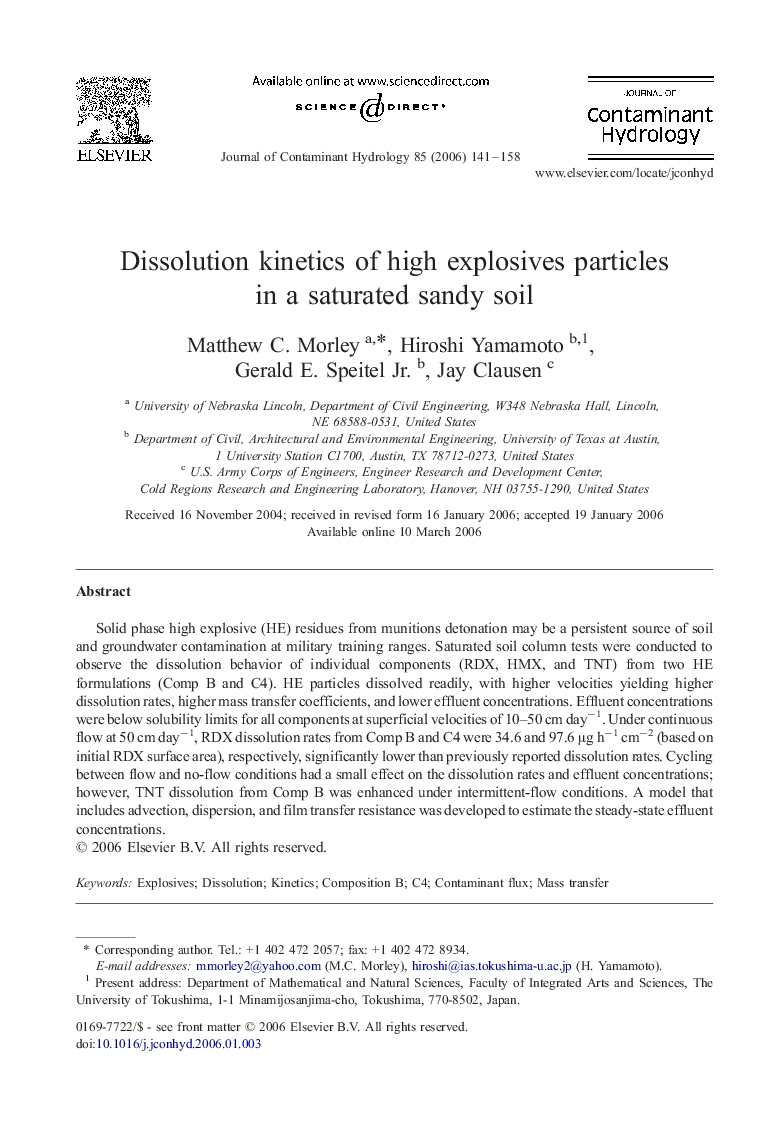| Article ID | Journal | Published Year | Pages | File Type |
|---|---|---|---|---|
| 4547632 | Journal of Contaminant Hydrology | 2006 | 18 Pages |
Abstract
Solid phase high explosive (HE) residues from munitions detonation may be a persistent source of soil and groundwater contamination at military training ranges. Saturated soil column tests were conducted to observe the dissolution behavior of individual components (RDX, HMX, and TNT) from two HE formulations (Comp B and C4). HE particles dissolved readily, with higher velocities yielding higher dissolution rates, higher mass transfer coefficients, and lower effluent concentrations. Effluent concentrations were below solubility limits for all components at superficial velocities of 10-50 cm dayâ 1. Under continuous flow at 50 cm dayâ 1, RDX dissolution rates from Comp B and C4 were 34.6 and 97.6 μg hâ 1 cmâ 2 (based on initial RDX surface area), respectively, significantly lower than previously reported dissolution rates. Cycling between flow and no-flow conditions had a small effect on the dissolution rates and effluent concentrations; however, TNT dissolution from Comp B was enhanced under intermittent-flow conditions. A model that includes advection, dispersion, and film transfer resistance was developed to estimate the steady-state effluent concentrations.
Related Topics
Physical Sciences and Engineering
Earth and Planetary Sciences
Earth-Surface Processes
Authors
Matthew C. Morley, Hiroshi Yamamoto, Gerald E. Jr., Jay Clausen,
